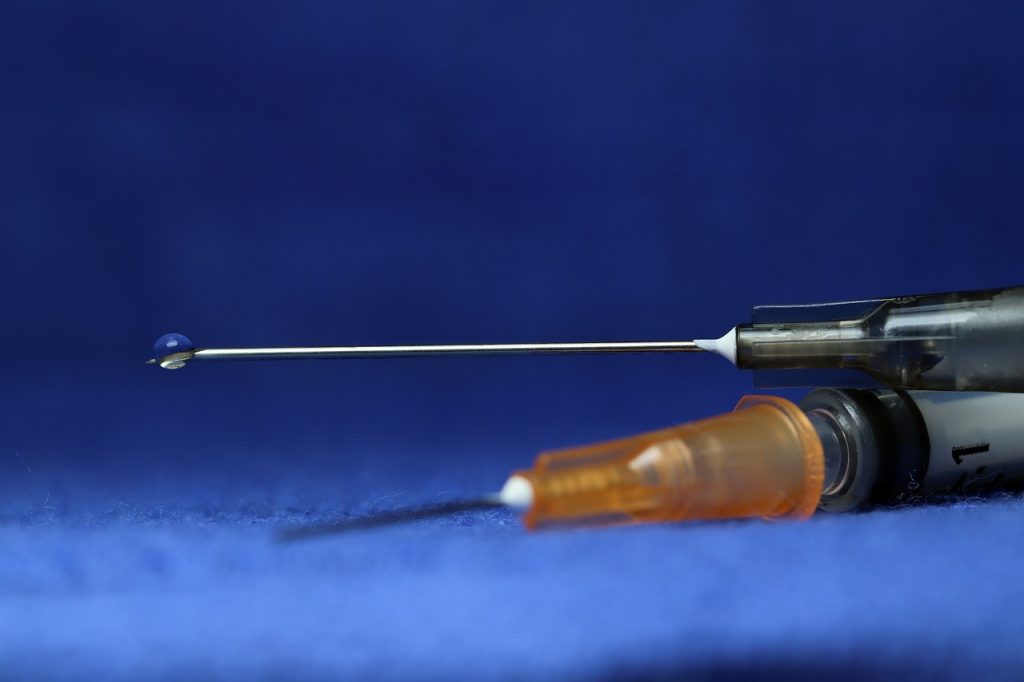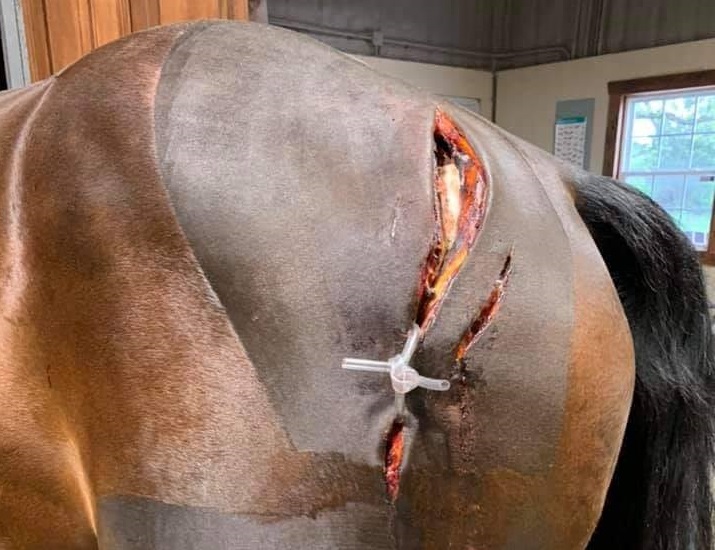Tuesdays with Tony
Over on the Faceplace this week, my humans posted a picture of a horse with what’s called Clostridial Myonecrosis (CM). It got A LOT of attention, so I felt it only right to research this syndrome further, and drop some of my amazing feline knowledge on you guys. Like anything with horses, there’s a lot of opinions surrounding clostridial myonecrosis. I’m going to stick to the facts.
Banamine causes this
We’ll call this a sort-of fact. The truth is, any shot given in the muscle can cause this to happen. The reason any intramuscular shot can cause CM is because it’s secondary to muscle damage, and any shot in the muscle causes some degree of muscle damage. It’s often a very small amount of muscle damage, but it’s still an injury. You see, when that damage happens, it sets up the perfect growth environment for a group of bacteria called Clostridia. This bacteria likes to grow where there is no air.
But how did this bacteria get there, you ask? The obvious answer: on the needle. The wrong answer: on the needle. We all carry spores of Clostridia in our muscles! It’s part of living on planet earth. These bacteria create little tiny spores that are really, really hard to kill. We (humans, cats, horses, dogs, parakeets, you name it) likely eat these spores on food. They enter our bodies through our GI tract, and then hang out in muscles waiting for the right conditions to come along.

Ever heard of gangrene?
That’s the less fancy, not-a-doctor, name for CM. It’s one bad dude! Gangrene had a 45% mortality rate in the American Civil War!!! By World War I, mortality was down to 10-12%. By World War 2, mortality rates were approaching 1%, and by Vietnam they had dropped even further to 0.01%. Why all this talk of war? This has been the big area for CM in humans. Those bullets, and swords, and all the other uncivilized things humans do during war, cause a ton of damage to muscles. Wars are also generally fought in less than sterile environments. What the medical community learned from these cases was the importance of air.
Fresh air as a cure
Overall, this is a family of bacteria you don’t want to mess with. The Clostridia family are also responsible for such winners as botulism and tetanus. Notice a theme? Botulism is famous for happening in improperly canned or stored canned food (no air), and tetanus happens after a deep, penetrating wound (no air). CM happens deep in the muscle where there’s no air. This is why in the pictures on the Faceplace (and below) you see big, deep cuts into the horse’s muscles. It’s all about getting air in there. The tubing you see tied in a knot is to keep the cuts open so air can continue to get deep into the muscles. Every day, sometimes even two to three times per day, doctors managing these cases look for new areas of CM. These new areas are opened up with new cuts into the tissue. I’m not going to lie: these are tough cases for the patients and the doctors. No veterinarian wants to cause an animal pain, but in these horses, it’s the only way they will survive. Antibiotics and aggressive pain control are also used to help these horses survive.

Ok, Ok, but how do I keep it from happening?
“Tony,” you say “all this is great, but how do I keep it from happening to my horse? That’s the knowledge I really want from your divine catness!” Maybe you wouldn’t add that last part, but you should. The bad news is you can’t 100% prevent CM from happening. The good news: 1) You can come pretty close, and 2) CM is pretty rare in horses. Horses get certain shots in the muscle all the time. Vaccines, for example, go in the muscle. Vaccines contain a very small amount of antibiotic to help combat CM before it can get started. Going to add yet another reason to get vaccines performed by your veterinarian: if this happens following a vaccine by a veterinarian, the vaccine company will cover the costs of treatment. Valley Vet definitely won’t do that. Other common shots given in the muscle are joint support treatments like Adequan. Again, these can cause CM, but are generally only mildly irritating to muscles which means they are way, way, way less likely to cause CM.
The very best way to prevent CM is to never, never, ever give anything in the muscle without checking with your veterinarian first. Banamine is a common culprit because it can be very irritating to muscles, but it isn’t the only one. Be 1,000% sure it’s OK to put the shot you are about to put in the muscle, in the muscle. Oh, and make sure your horse is clean before you do give that shot. I’m not saying they have to be ready for The All American Congress halter classes, but be sure your needle doesn’t have to go through a ½” of mud to get to the skin.
Those pictures are scary, even to this tough cat! However, an ounce of prevention goes a long way, and a conversation with your veterinarian about what medications your horses is getting goes even farther!
Now be a good human, and subscribe to my blog. You’ll get it a full day before anyone else. That’s right: Tony, a day early. Happy Monday!
Until next week,
~ Tony
P.S. Are you thirsting for more horse knowledge? You should browse through my previous blogs. Or, if you like listening better than reading, you should check out the podcast my docs put out. It’s up top in the menu bar, where it says ‘Podcast.” Or just click here. It will rock your world.
Tuesdays with Tony is the official blog of Tony the Clinic Cat at Springhill Equine Veterinary Clinic in Newberry, Florida. If you liked this blog, please subscribe below, and share it with your friends on social media! For more information, please call us at (352) 472-1620, visit our website at SpringhillEquine.com, or follow us on Facebook!
[jetpack_subscription_form title="Subscribe to Whinny's Wisdoms"]
